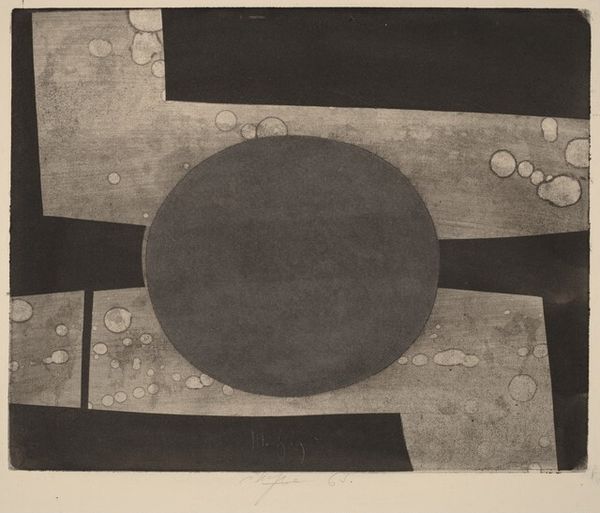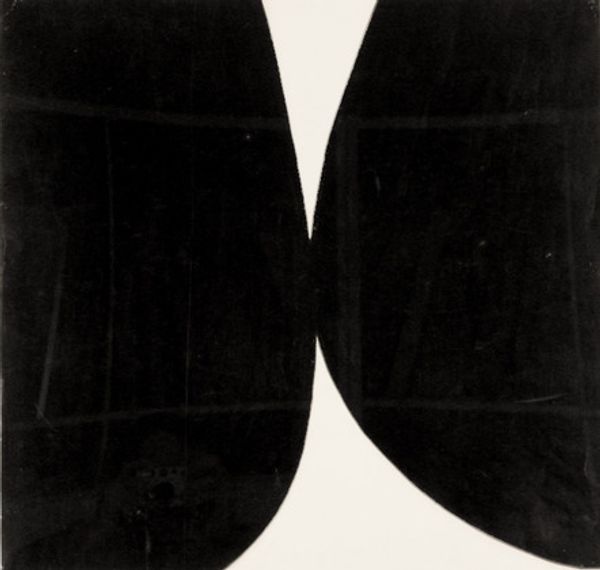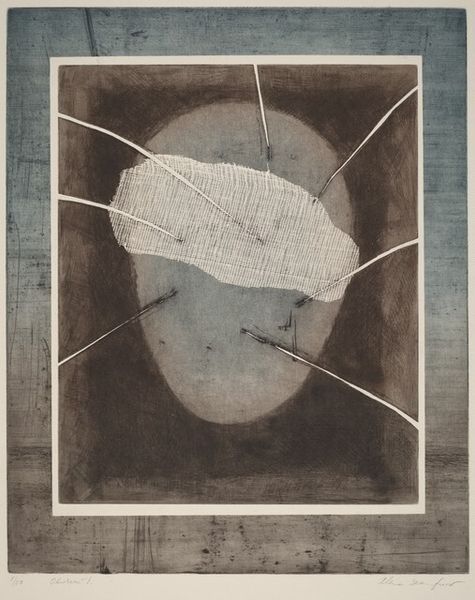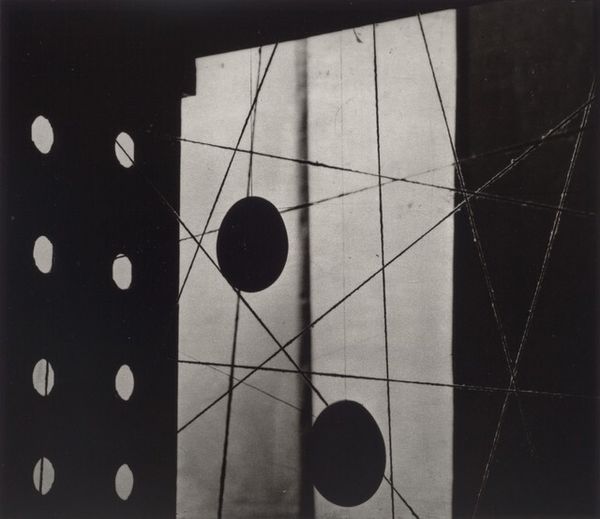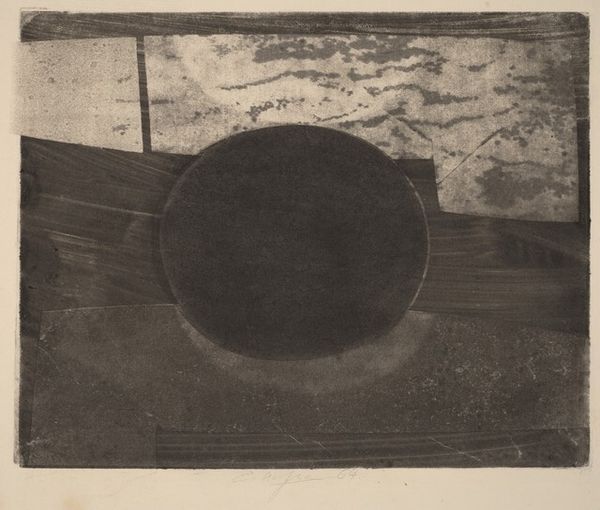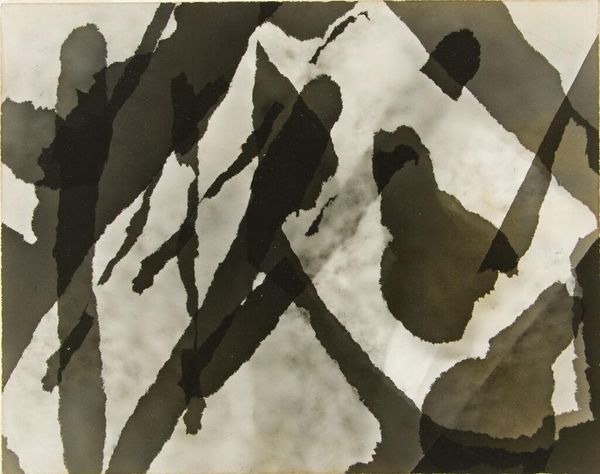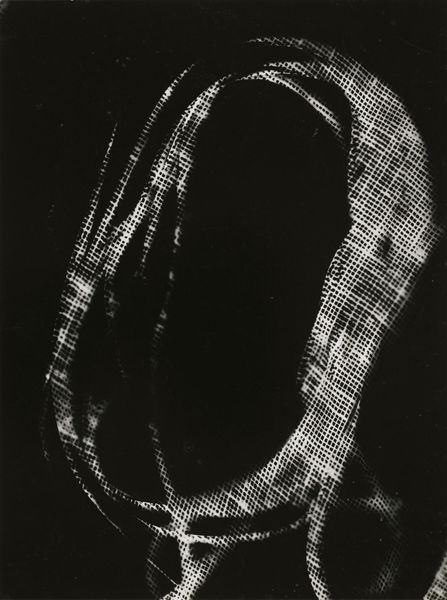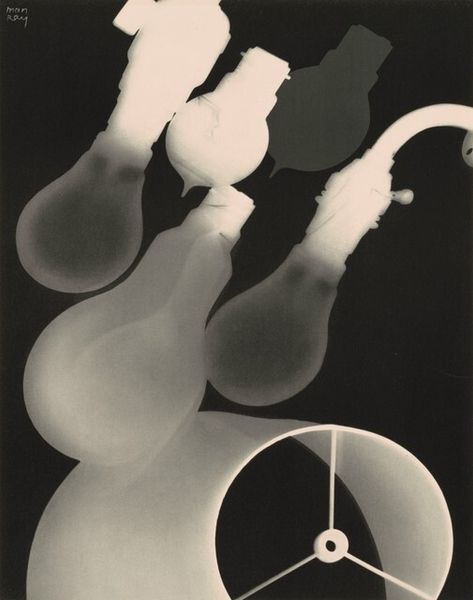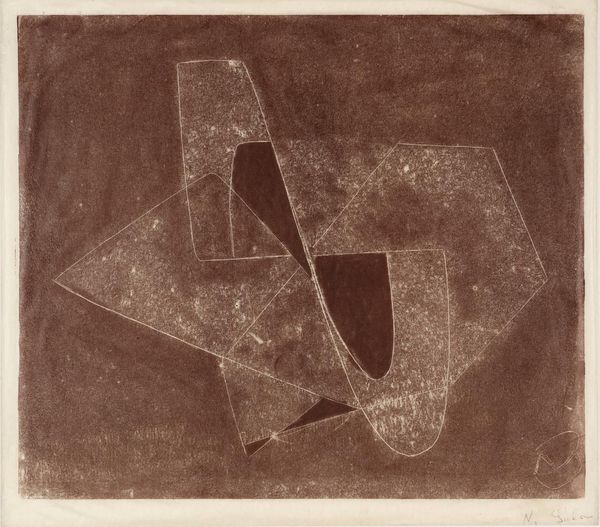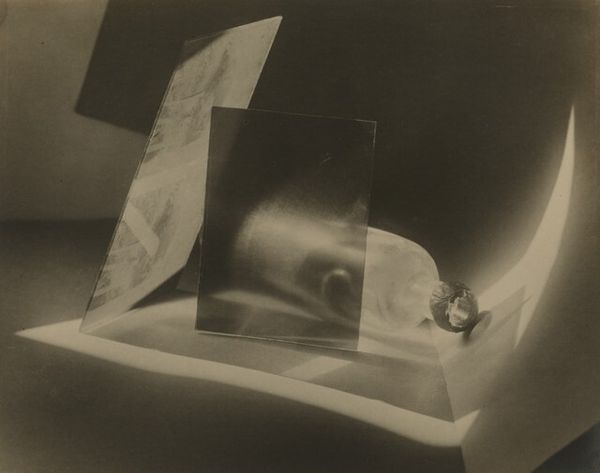
photography
#
contemporary
#
landscape
#
photography
#
realism
Dimensions: image: 24.9 × 24.5 cm (9 13/16 × 9 5/8 in.) sheet: 35.6 × 27.9 cm (14 × 11 in.)
Copyright: National Gallery of Art: CC0 1.0
Curator: Looking at Emmet Gowin's "Pivot Agriculture, South of Moses Lake, Washington" from 1991, captured through photography, my first reaction is one of stark geometry. It’s visually arresting. What stands out to you? Editor: Immediately, I see circles. The image hums with archetypal symbols—the circle representing wholeness, unity, the earth itself, even time. They look almost like crop circles, these shapes dominating the monochrome landscape, don't you think? Curator: I find the interplay between the organic, rugged terrain and these perfectly circular irrigated fields fascinating. It speaks to the tension between human intervention and the natural world. It challenges our understanding of what landscape photography typically represents, pushing it into the contemporary world of land management. Editor: Absolutely. Those perfect circles sliced into the earth make me wonder, are these signs of innovation or interventions that speak of our disconnect from nature’s rhythms? Are we celebrating progress, or are we creating wounds on the Earth’s surface? These are definitely loaded symbols. Curator: Precisely. There is this undeniable sense of environmental manipulation within an ideological framework. Gowin’s photograph is not merely a documentary, but it implicitly critiques modern agricultural practices and its consequences. The land, as represented here, takes on a symbolic role. Editor: Consider the stark monochromatic palette; it gives an air of bleakness to this agricultural undertaking. It almost empties the promise from farming. The fields appear desolate, and their symbolism shifts to suggest a broken circle, implying something is lost or incomplete in this system. Curator: This bleakness seems very purposeful; it leads me to reflect on water usage, environmental sustainability, and the very economic model that drives this sort of landscape alteration. The beauty lies, perhaps disturbingly, in what is unsaid but implied. Editor: You are spot on. Beauty with an edge. Those bold geometric imprints raise important questions about how we remember our world, our future in it, as we consume its images, and alter its appearance, often, irrevocably. Curator: Indeed. Gowin asks us to consider our collective environmental responsibility as we gaze at what is conventionally a simple landscape image. It makes one rethink landscape photography altogether. Editor: I leave pondering the circles of life, now etched by our actions—symbols imbued with a powerful and uneasy truth about our age.
Comments
No comments
Be the first to comment and join the conversation on the ultimate creative platform.

